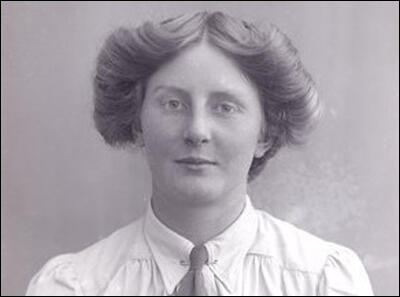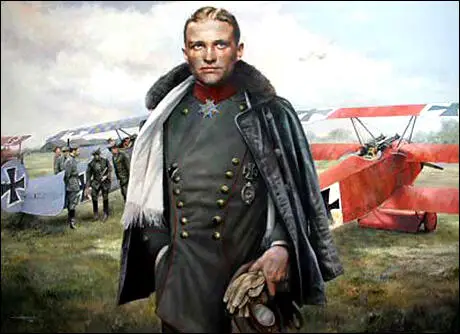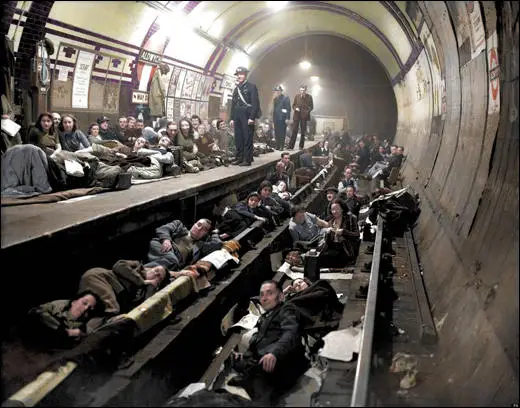On this day on 17th September
On this day in 1909 Charlotte Marsh, Mary Leigh, Laura Ainsworth, Mabel Capper, Patricia Woodcock and Rona Robinson conducted a rooftop protest at Bingley Hall, Birmingham, where Herbert Asquith was addressing a meeting from which all women had been excluded. Using an axe, Leigh removed slates from the roof and threw them at the police below. Sylvia Pankhurst later recalled: "No sooner was this effected, however, than the rattling of missiles was heard on the other side of the hall, and on the roof of the house, thirty feet above the street, lit up by a tall electric standard was seen the little agile figure of Mary Leigh, with a tall fair girl (Charlotte Marsh) beside her. Both of them were tearing up the slates with axes, and flinging them onto the roof of the Bingley Hall and down into the road below-always, however, taking care to hit no one and sounding a warning before throwing. The police cried to them to stop and angry stewards came rushing out of the hall to second this demand, but the women calmly went on with their work."
The Freeman's Journal reported: "Mary Leigh and Mabel Capper have long been among the most reckless members of the suffragist movement. They were two of a large band who visited Birmingham in September, 1909, and were arrested with others on charge arising out of a desperate and well-organised attempt to storm Bingley Hall where Mr Asquith was speaking to an audience of ten thousand. Leigh and another, eluding the vigilance of the police, climbed on to the roof of an adjoining factory, from which she threw ginger beer bottles, slates, and other missiles on the glass roof of Bingley Hall, and into the street when the Premier was passing in a motor car. While awaiting his appearance the women amused themselves by throwing projectiles at the crowd in the street and the police, several officers being struck. A policeman who climbed on the roof – a hazardous undertaking – found Leigh with her boots off, jumping about like a cat, as he described it, and armed with an axe used for the purpose of ripping slates from the roof: 'Come on up at your peril,' the women shouted to the officers, who were struck several times before effecting an arrest."
Leigh got four months's imprisonment, Marsh three months, the others from a month to fourteen days. They immediately decided to go on hunger-strike, a strategy developed by Marion Wallace-Dunlop a few weeks earlier. Wallace-Dunlop had been immediately released when she had tried this in Holloway Prison, but the governor of Winson Green Prison, was willing to feed the three women by force.

On this day in 1915 Manfred von Richthofen (Red Baron) shot down his first aeroplane in a dog-fight on the Western Front.
We were all at the butts trying our machine guns. On the previous day we had received our new aeroplanes and the next morning Boelcke was to fly with us. We were all beginners. None of us had had a success so far. Consequently everything that Boelcke told us was to us gospel truth. Every day, during the last few days, he had, as he said, shot one or two Englishmen for breakfast.
The next morning, the seventeenth of September, was a gloriously fine day. It was therefore only to be expected that the English would be very active. Before we started Boelcke repeated to us his instructions and for the first time we flew as a squadron commanded by the great man whom we followed blindly.
We had just arrived at the Front when we recognized a hostile flying squadron that was proceeding in the direction of Cambrai. Boelcke was of course the first to see it, for he saw a great deal more than ordinary mortals. Soon we understood the position and everyone of us strove to follow Boelcke closely. It was clear to all of us that we should pass our first examination under the eyes of our beloved leader.
Slowly we approached the hostile squadron. It could not escape us. We had intercepted it, for we were between the Front and our opponents. If they wished to go back they had to pass us. We counted the hostile machines. They were seven in number. We were only five. All the Englishmen flew large bomb-carrying two-seaters. In a few seconds the dance would begin.
Boelcke had come very near the first English machine but he did not yet shoot. I followed. Close to me were my comrades. The Englishman nearest to me was traveling in a large boat painted with dark colors. I did not reflect very long but took my aim and shot. He also fired and so did I, and both of us missed our aim. A struggle began and the great point for me was to get to the rear of the fellow because I could only shoot forward with my gun. He was differently placed for his machine gun was movable. It could fire in all directions.
Apparently he was no beginner, for he knew exactly that his last hour had arrived at the moment when I got at the back of him. At that time I had not yet the conviction "He must fall!" which I have now on such occasions, but on the contrary, I was curious to see whether he would fall. There is a great difference between the two feelings. When one has shot down one's first, second or third opponent, then one begins to find out how the trick is done.
My Englishman twisted and turned, going criss-cross. I did not think for a moment that the hostile squadron contained other Englishmen who conceivably might come to the aid of their comrade. I was animated by a single thought: "The man in front of me must come down, whatever happens." At last a favorable moment arrived. My opponent had apparently lost sight of me. Instead of twisting and turning he flew straight along. In a fraction of a second I was at his back with my excellent machine. I give a short series of shots with my machine gun. I had gone so close that I was afraid I might dash into the Englishman. Suddenly, I nearly yelled with joy for the propeller of the enemy machine had stopped turning. I had shot his engine to pieces; the enemy was compelled to land, for it was impossible for him to reach his own lines. The English machine was curiously swinging to and fro. Probably something had happened to the pilot. The observer was no longer visible. His machine gun was apparently deserted. Obviously I had hit the observer and he had fallen from his seat.
The Englishman landed close to the flying ground of one of our squadrons. I was so excited that I landed also and my eagerness was so great that I nearly smashed up my machine. The English flying machine and my own stood close together. I rushed to the English machine and saw that a lot of soldiers were running towards my enemy. When I arrived I discovered that my assumption had been correct. I had shot the engine to pieces and both the pilot and observer were severely wounded. The observer died at once and the pilot while being transported to the nearest dressing station. I honored the fallen enemy by placing a stone on his beautiful grave.

On this day in 1940 Harold Nicholson reports that the Royal Family receive a hostile reception in London during the Blitz. "Everyone is worried about the feeling in the East End... There is much bitterness. It is said that even the King and Queen were booed the other day when they visited the destroyed."
Before the war started the government made money available for materials for local authorities to build public outdoor shelters, although they had to foot the bill for the construction costs. New buildings had to incorporate spaces for shelters, and employers with a workforce of fifty or more in a designated target area were obliged to provide shelter accommodation for their employees (they would receive government funding to help pay for this). Once war started the government urged local authorities to provide purpose-built public shelters, above ground heavily protected brick and concrete constructions capable of holding up to fifty people. Progress was slow and by the time of the Blitz of the 27.5 million people living in areas likely to be attacked, only 17.5 million had been provided with some sort of shelter, domestic or public.
Barbara Nixon, an air-raid warden in London later wrote: "It is now generally admitted that during September 1940 the shelter conditions were appalling. In many boroughs there were only flimsy surface shelters, with no light, no seats, no lavatories, and insufficient numbers even of these; or railway arches and basements that gave an impression of safety, but had only a few inches of brick overhead, or were rotten shells of buildings with thin roofs and floors... In our borough... we had two capacious shelters under business firms, which held three or four hundred, also fifteen small sub-surface concrete ones in which fifty people could sit upright on narrow wooden benches along the wall. But they were poorly ventilated, and only two out of the nine that came in my province could pretend to be dry."
Many people sheltered under railway arches. One of the most popular was Tilbury railway arch in Stepney. The borough council made it into a public shelter for 3,000 people. However, it is claimed that as many as 16,000 used it on some nights. It was visited by many journalists and Negley Farson found its "vital, impulsive life... inspiring". Harold Scott agreed and described how "a girl in a scarlet cloak danced wildly to the cheers of an enthusiastic audience; a party of Negro sailors sang spirituals while someone played the accordion."
The most expensive London hotels and restaurants provided secure underground accommodation for their customers. Some restaurants provided camp beds in their cellars. The Dorchester Hotel, which was considered to be secure because of its reinforced-concrete structure, turned its basement gymnasium into an air-raid dormitory. Lady Diana Cooper felt "quite secure" spending time "with all that was most distinguished in London society, including members of the government such as Lord Halifax."
The Communist Party of Great Britain (CPGB) was very active in London. Phil Piratin, a Communist councillor in Stepney, became an ARP warden. He was also active in converting pre-war East End tenants' associations into Shelter Committees to keep up the battle for deep shelters and to press for better facilities in public surface shelters. As the government did not respond quickly enough members of the CPGB decided to take direct action against The Savoy Hotel had turned its underground banqueting hall as a shelter for its customers.
As the government did not respond quickly enough members of the CPGB decided to take direct action. Piratin decided to lead a party of seventy of the borough's residents to the Savoy to demand access to its shelter. "We decided what was good enough for the Savoy Hotel parasites was reasonably good enough for Stepney workers and their families. We had an idea that the hotel management would not see eye to eye with this so we organised an invasion without their consent."
On 15th September, 1940, about a hundred East Enders, rushed on the hotel after the air-raid sirens sounded and occupied the shelter. However, the protesters were soon removed. The government became worried about public order. Communist shop-stewards threatened to go on strike if their employers did not provide deep shelters. The CPGB newspaper, The Daily Worker, claimed: "The shelter policy of the government is not just a history of incompetence and neglect, it is a calculated class policy... A determination not to provide protection because profit is placed before human lives... the bankruptcy of the government's shelter policy is plain for all to see... safe in their own luxury shelters the ruling class must be forced to give way."
The News Chronicle, Daily Mail and Evening Standard. also became involved in the campaign to force the government to build more public shelters. The authorities remained opposed and ARP lecturers were instructed to point out the dangers. "What happens if the doors get blocked? asked a warden in the Mile End Road. "Then people won't be able to get up from the bowels of the earth and will just have to remain there with RIP written on top."


